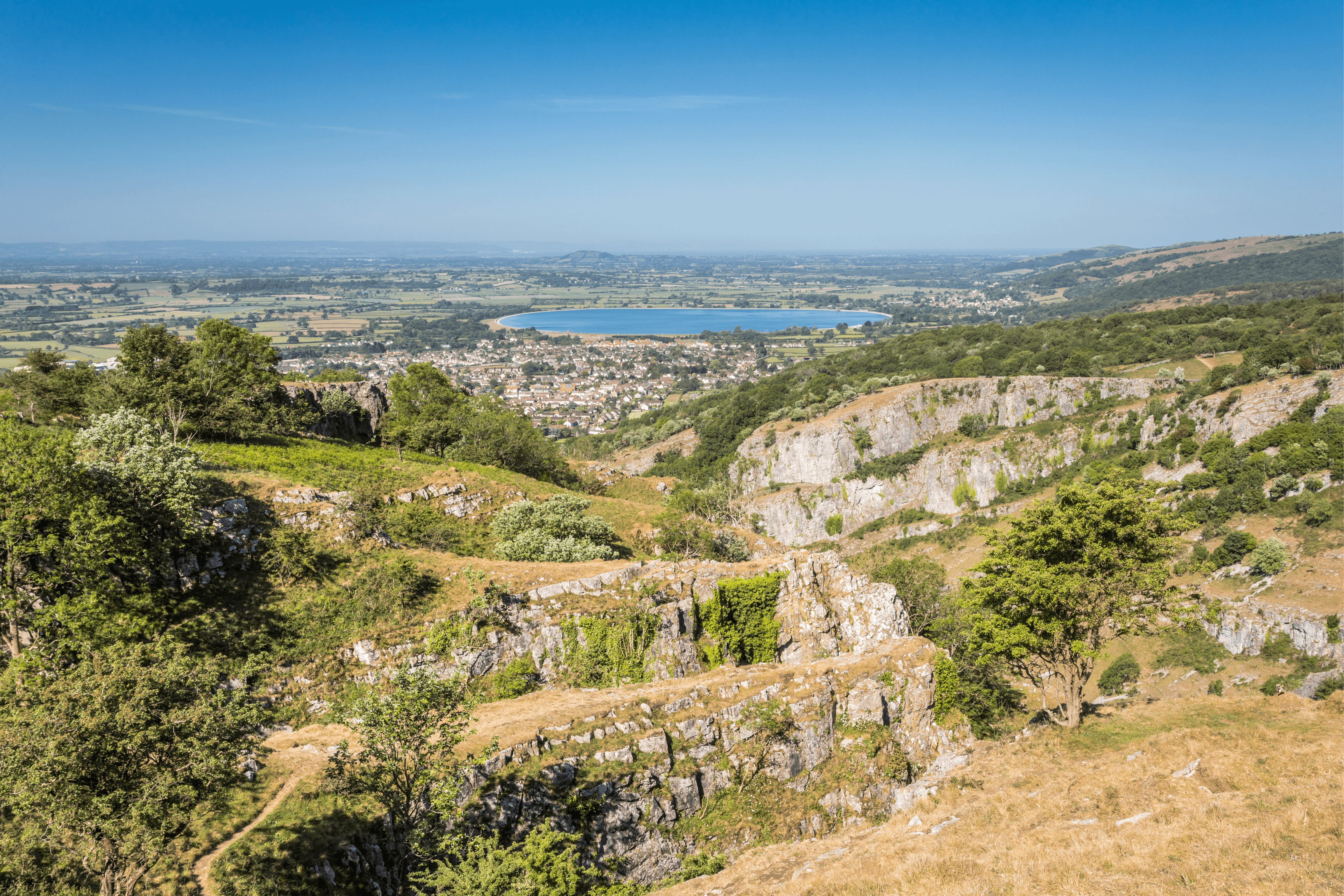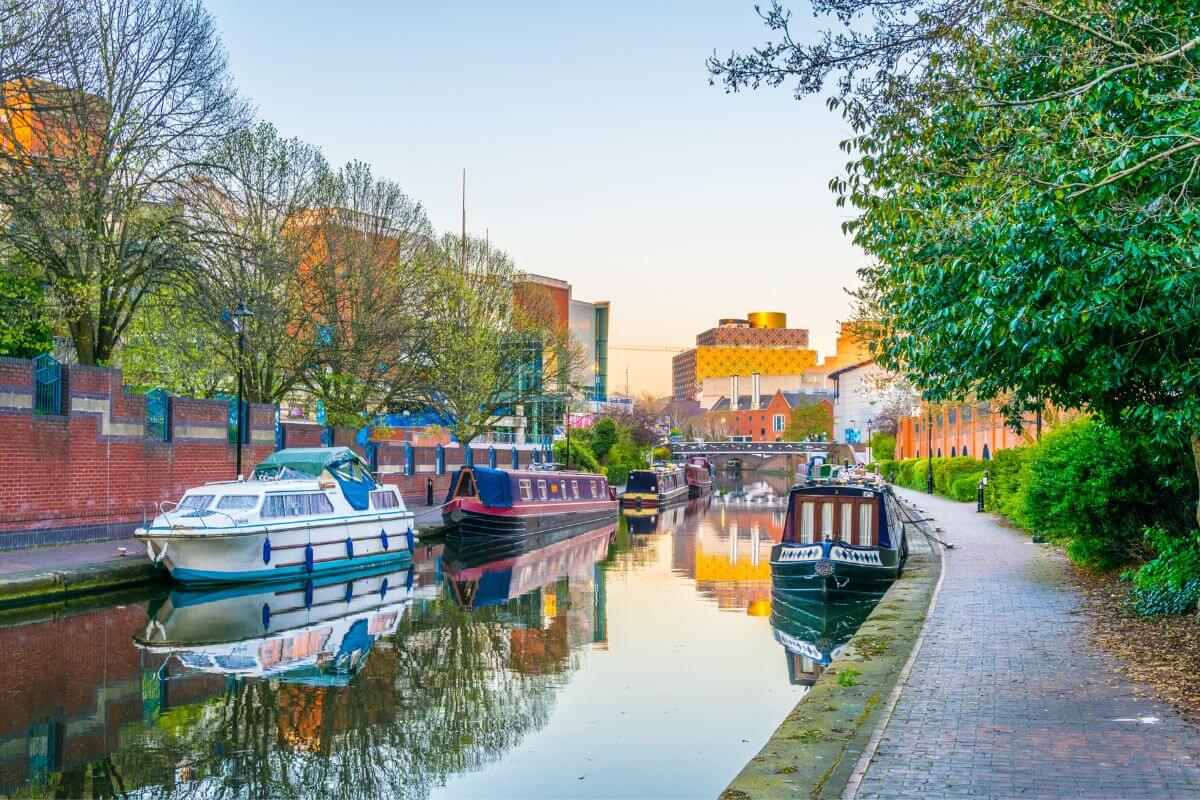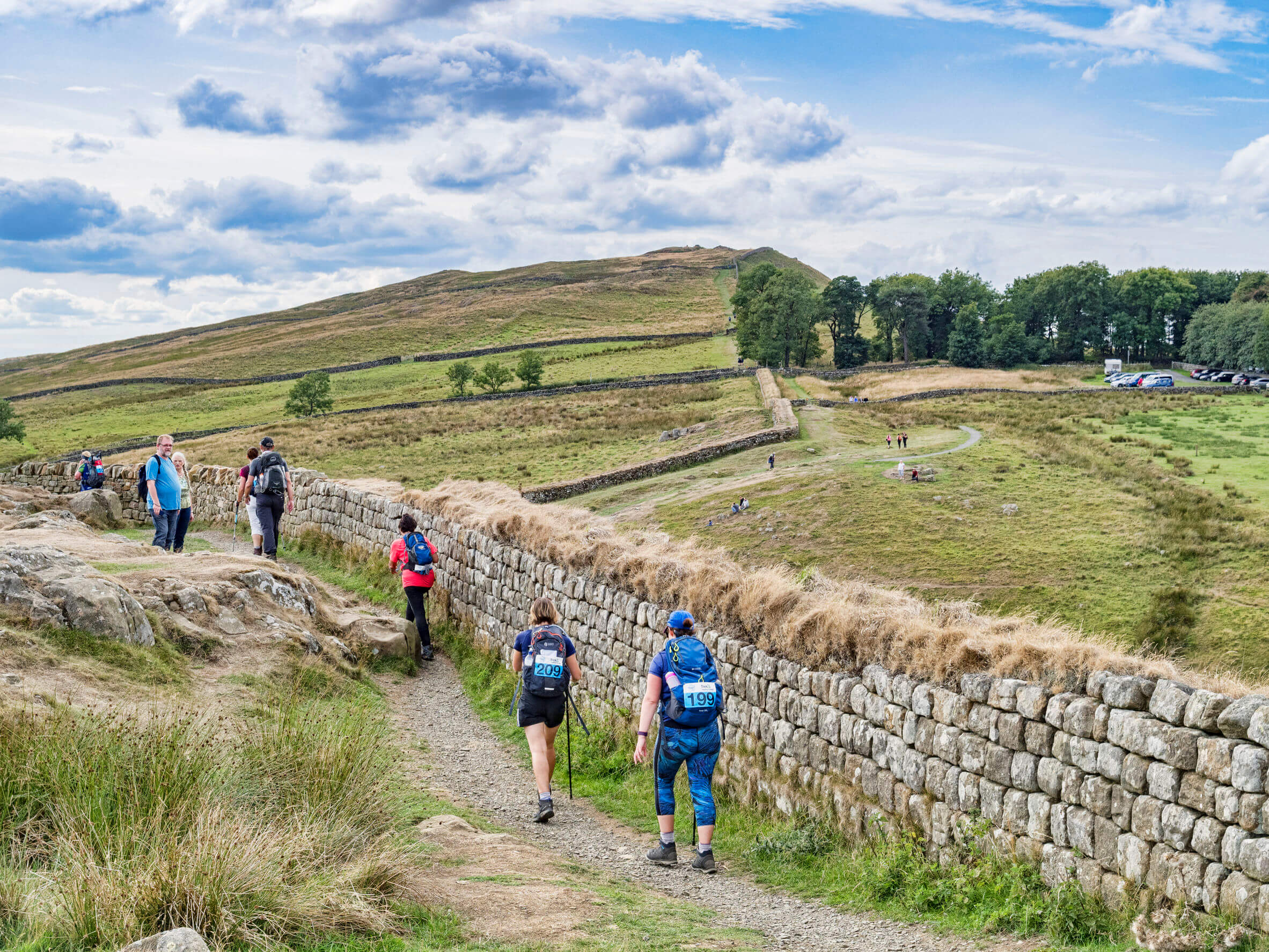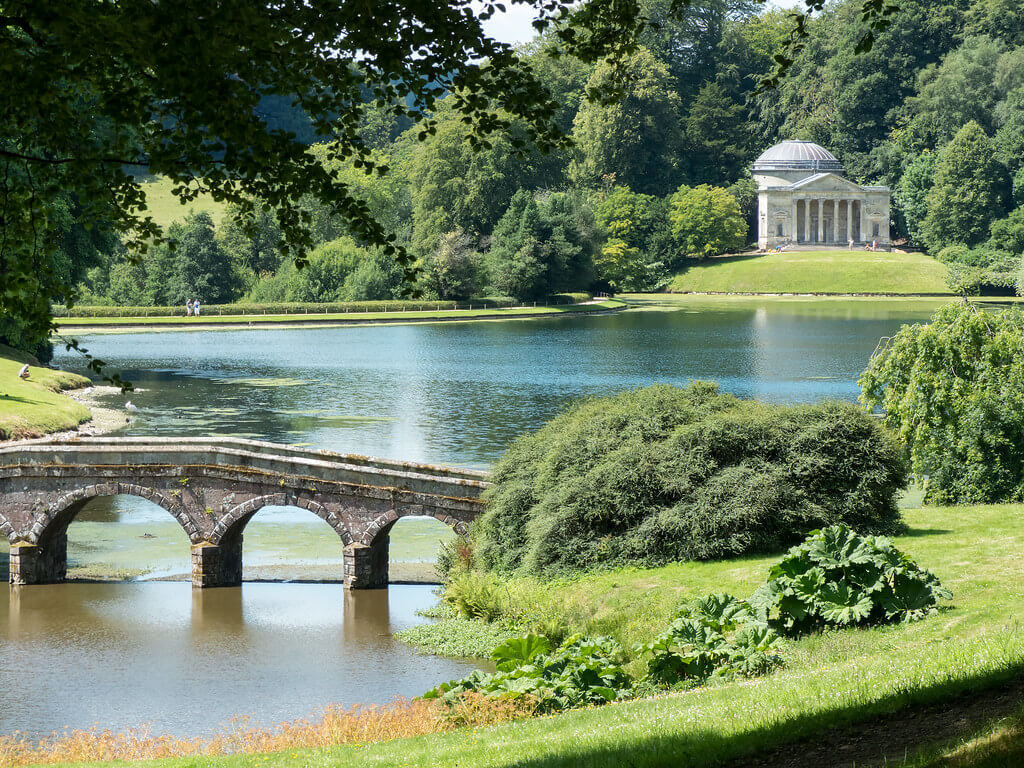12 of the Highest Mountains in England (and How to Climb Them)
Fancy a challenging hike to the peaks of the highest mountains in England? Here’s where you can find England’s tallest mountains, plus a few tips for getting yourself up there.

The views from the highest peaks in England are truly awe-inspiring. If you’re looking for an active day out, and a memorable day trip to show off about to your friends, you simply need to take on the challenge of ascending to the summits of the highest England mountains. Climb to the highest point in England, and you’ll get serious cred points. Climb them all, and even we’ll be impressed.
Most of England’s tallest mountains are located in the Lake District, the nation’s most mountainous region. But incredible peaks can also be found in the Pennines, the Yorkshire Dales, the Cheviot Hills and beyond.
Hiking to the summits of the tallest mountains in England will give you the chance to soak up the country’s diverse rural vistas. While every destination is different, all England’s mountains have at least one thing in common – amazing views.
So, without further ado, let’s dive into the highest mountains in England, separated into districts that boast plenty in the way of things to do on top of hiking.
Highest Mountains in England
Hiking to the peaks of the highest mountains in England may prove challenging, but the rewarding views make it more than worthwhile.
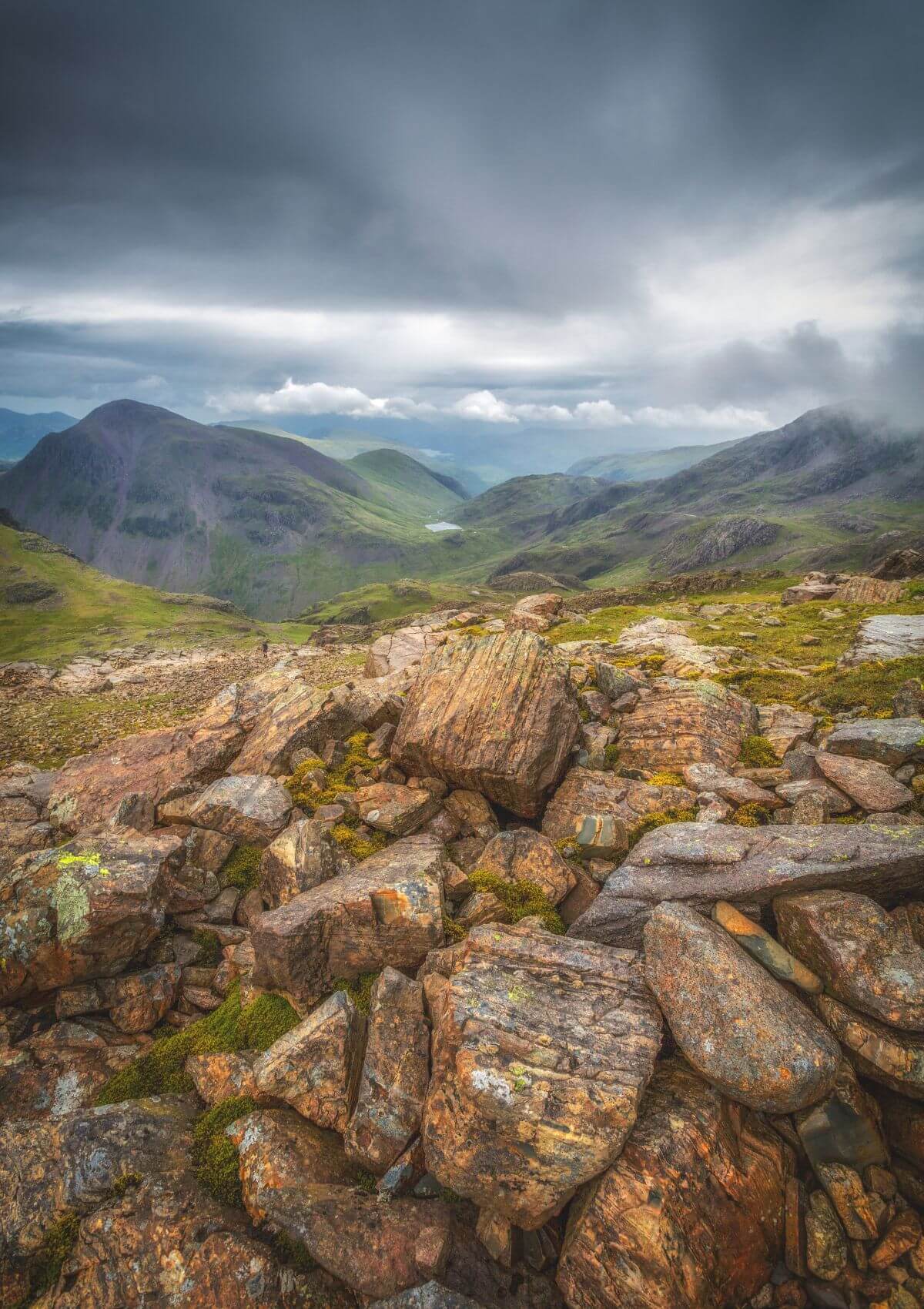
Highest mountains in the North of the Lake District
Many of England’s best viewpoints can be reached on a day out in the Lake District, the nation’s most mountainous region (with plenty of stunning sights to see besides rugged summits).
1. Helvellyn
Within the northeast quadrant of the Lake District is the 3,117-feet-tall (950 metres) Helvellyn. To get there, most visitors hike the route between Legburthwaite and Glenridding. It’ll take you along Sticks Pass and Raise, over Striding Edge and to the summit of Helvellyn.

Your trek starts with tree-laden views over Keswick and Thirlmere, which eventually gives way to grassy plains. At Raise, you get sweeping views of Ulswater, Haweswater and upland landscapes. The highlight comes when you challenge the narrow and exposed ridge of Striding Edge – a glittering tarn.
We don’t recommend doing the hike from Glenridding as you won’t be able to see the craggy ridge. It’s difficult to prepare for it.
2. Skiddaw
Dominating the north Lake District landscape is another one of England’s highest mountains, Skiddaw, which reaches a height of 3,054 feet (931 metres).
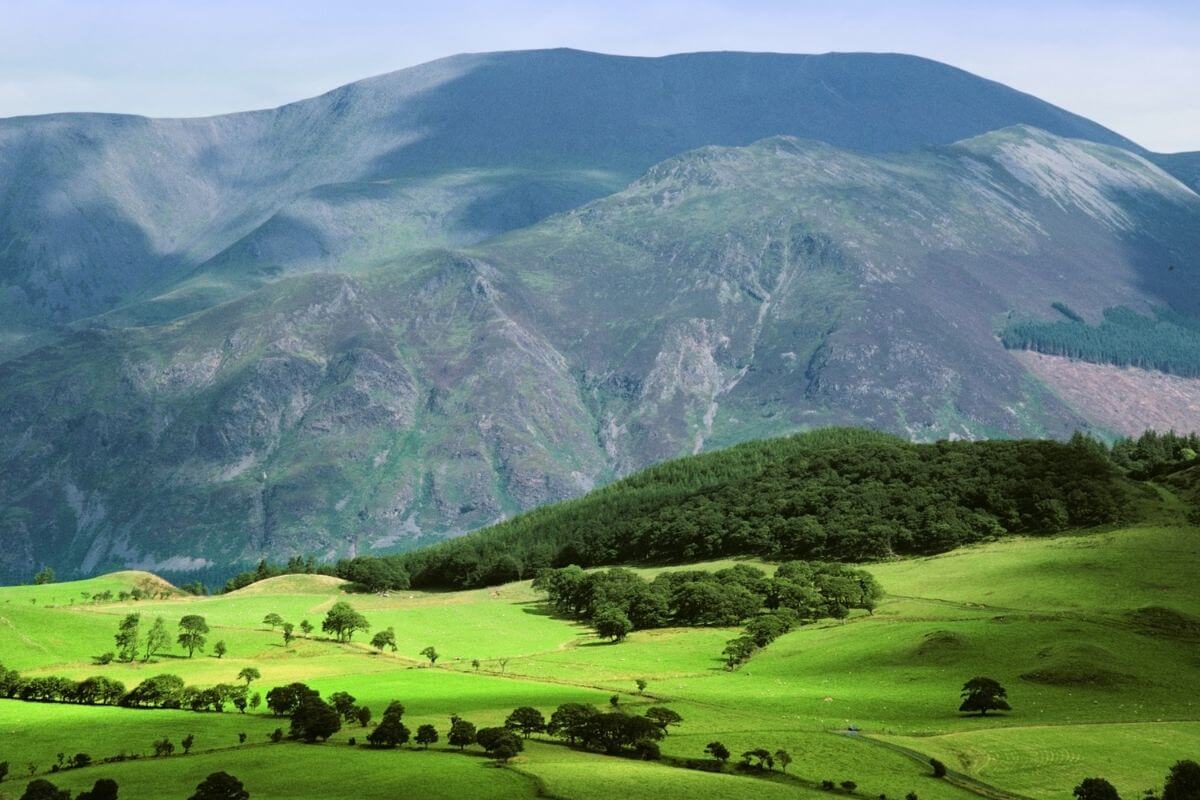
The most popular route runs from the fell of Latrigg via a wide, well-made path. Adventurous spirits may prefer to take a linear route from the Dyke Nook plantation up the steep Ullock Pike that approaches Skiddaw over the ridge.
Don’t expect to see a lot of vegetation; only some sections have both bush and grass. You will, however, spot the grand slate summit of Skiddaw along the way. Take in Alfred Wainwright’s Lakeland Fells (all six of them!) and the cairn circle that marks Skiddaw’s summit. These views make the hike to Skiddaw one of the best things to do in Cumbria.
Highest mountains in the South of the Lake District
While many stunning peaks can be found in the north of the Lake District, an abundant of beautiful mountains – including the tallest mountain in England – call the region’s south home.
3. Scafell Pike
Towering over the Lake District is the highest mountain in England: Scafell Pike. At 3,209 feet (978 metres), the peak overlooks Borrowdale Valley’s dips and curves.
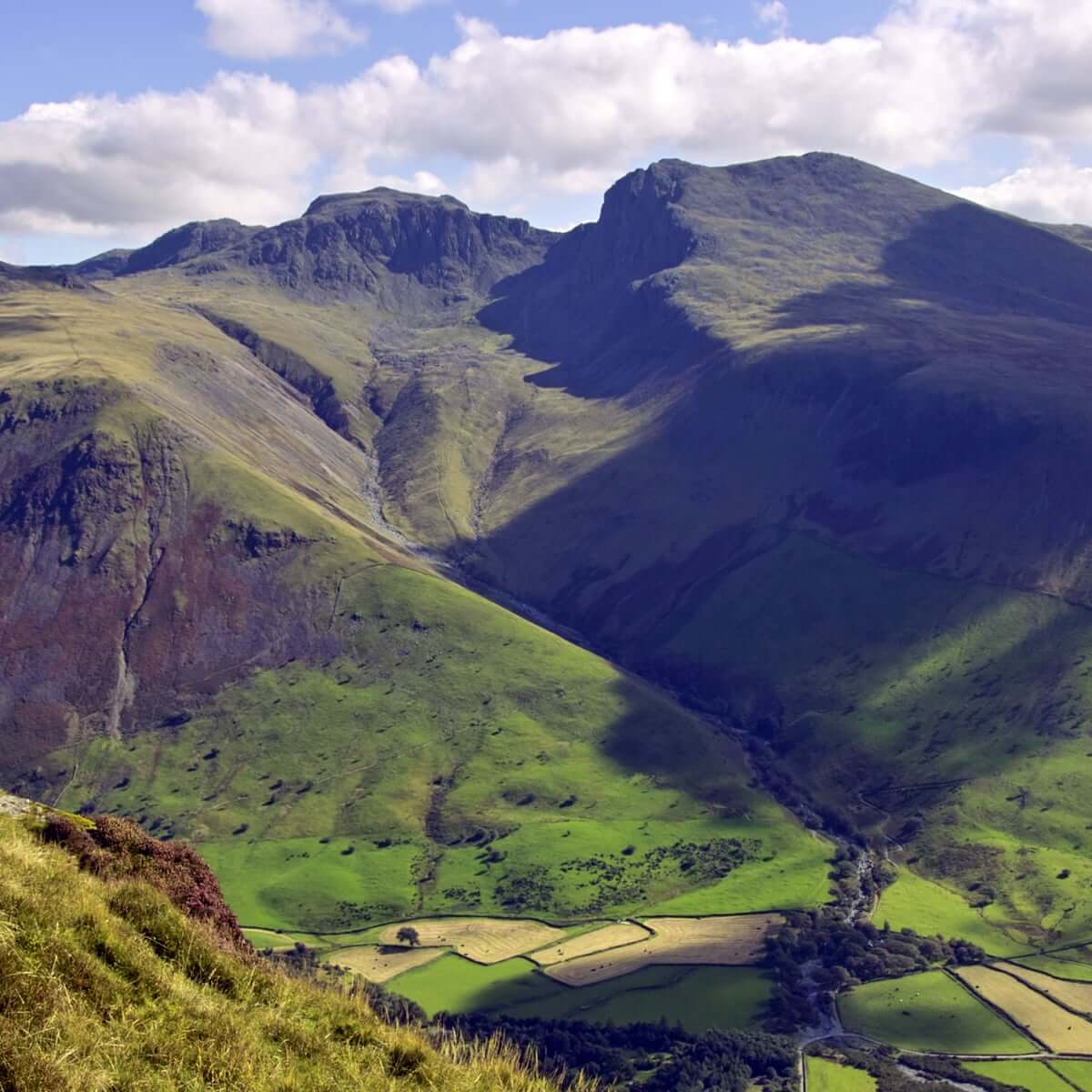
Typically, you’d start the route at Seathwaite Farm and transition onto Corridor Route, turning the loop at Dropping Crag. The 11-mile hike takes you up rocky ledges and multiple gullies, featuring views of Stockley Bridge, Styhead Tarn, waterfalls and panoramas of the Wast Water lake.
You can also reach Scafell Pike by taking a bus from Ambleside (a popular place to visit on days out from Manchester) to the Old Dungeon Ghyll Hotel. From there, follow along Mickleden and take the path that bears left.
There’s little to no shade on this open path, so you might want to slather on the sunscreen and pack your day hike bag well!
4. Scafell
The second highest mountain in England is actually neighbour to the first – Scafell, standing at 3,163 feet (964 metres), is on the other side of the Mickledore col.

You can expect a wide range of landscapes to gaze upon. To the south, smooth slopes lacking in vegetation; in the east and north, the finest rock scenery in the Lake District. There are also a number of tarns on the ascent, which lead to a large cairn and cross of stones at the summit. Climb to the north top for views straight down to Mickledore and the fine vistas of the Western Fells.
Most people take the classic route of Lord’s Rake path from Wast Water; this follows the main Scafell Pike footpath. For a more pleasant walk, start your trek from Boot in Eskdale and follow the River Esk upstream.
Once you’re done hiking, here are some great places to go paddleboarding in the Lake District to complete your trip. While you’re in this picturesque region, don’t forget to visit some of the Lake District’s prettiest towns and villages.
Highest mountains in the Northern Pennines
The Northern Pennines is a picture-perfect UNESCO Global Geopark, home to lush moors, rivers, farms, waterfalls, trails and some of the highest mountains in England.
5. Cross Fell
The highest mountain in England outside of the Lake District, Cross Fell lies within the North Pennines Area of Outstanding Natural Beauty. Perched above the historic county of Cumberland, the stony plateau rises over Eden Valley in the region’s southwest and slopes toward South Tyne and Tees Valley in North East England.
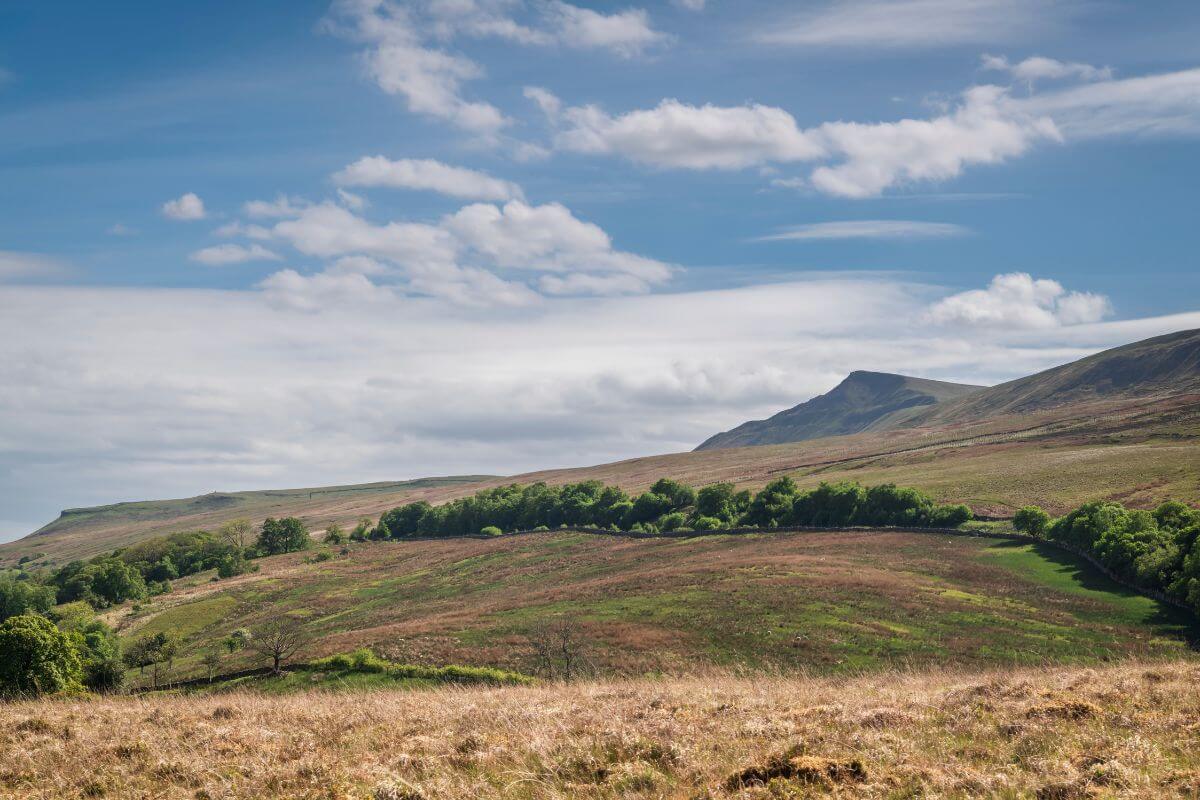
Crowned by a cross-shaped dry-stone shelter at an elevation of 2,930 feet (893 metres), the summit looks out across Eden Valley to the Lake District; even the Southern Uplands of Scotland on clear days. Grassland and rare alpine plants span the surface, which may carry patches of snow as late as July.
The easiest way to get to Cross Fell is via the well-constructed Pennine Way track. It’s a 10.75 mile circular walk that’s popular but gruelling.
6. Great Dun Fell
Falling within the boundaries of Westmorland, Great Dun Fell is just three kilometres away from Cross Fell. At 2,782 feet (848 metres) high, this fell is home to Britain’s highest road.
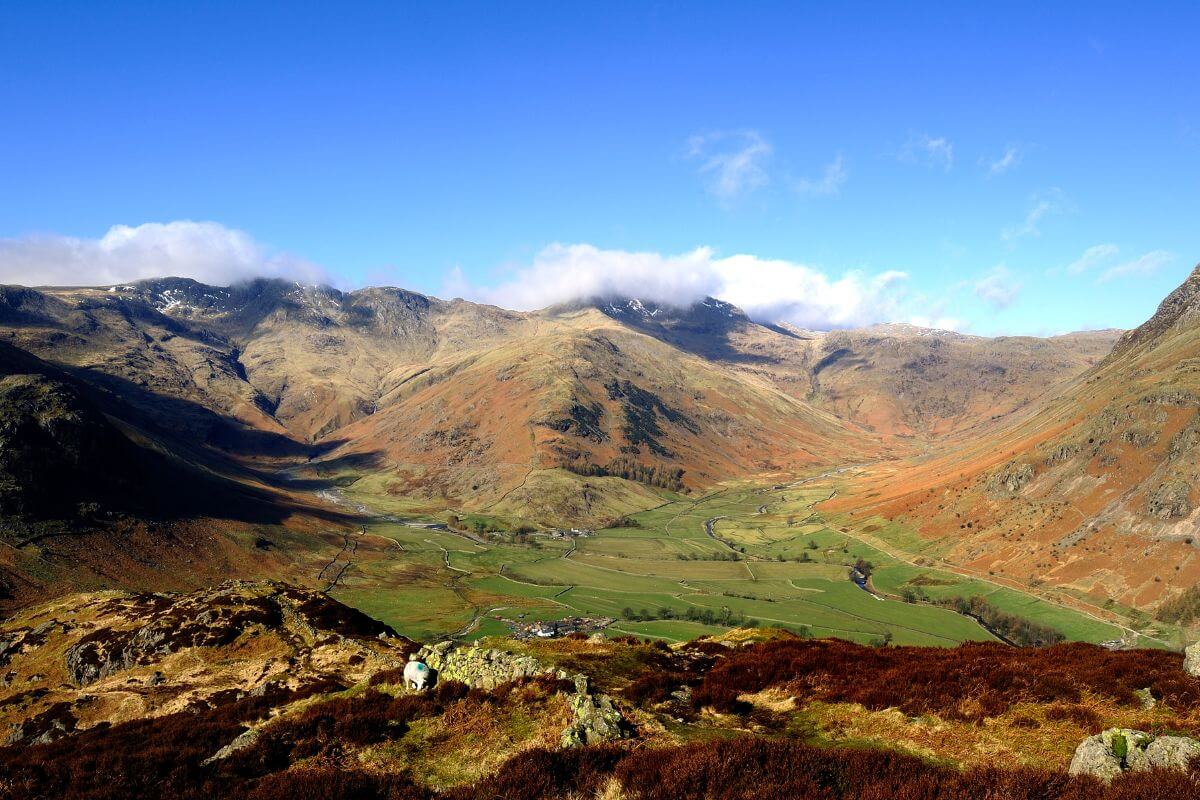
The Civil Aviation Authority’s air traffic control radar sits at the summit, accessible via a paved road. While the upper section is marked private and fenced off from cars, it’s open to walkers, cyclists and horse riders. Hikers will probably prefer something off road. As Great Dun Fell Lies on the Pennine Way route between Dufton and Cross Fell, you can wind through the wild moorlands.
Views are mainly other Pennine tops, but you’ll find abandoned Silverband mines along the west side. These overlook the Vale of Eden in Cumbria.
Highest mountains in the Cheviot Hills
For views of England’s extreme north and the landscapes of southern Scotland, we suggest hiking in the Cheviot Hills, one of the best areas to visit on a day out in Northumberland.
7. The Cheviot
Just two kilometres from Scotland’s borders is the extinct volcano and highest mountain in England’s extreme north: The Cheviot.
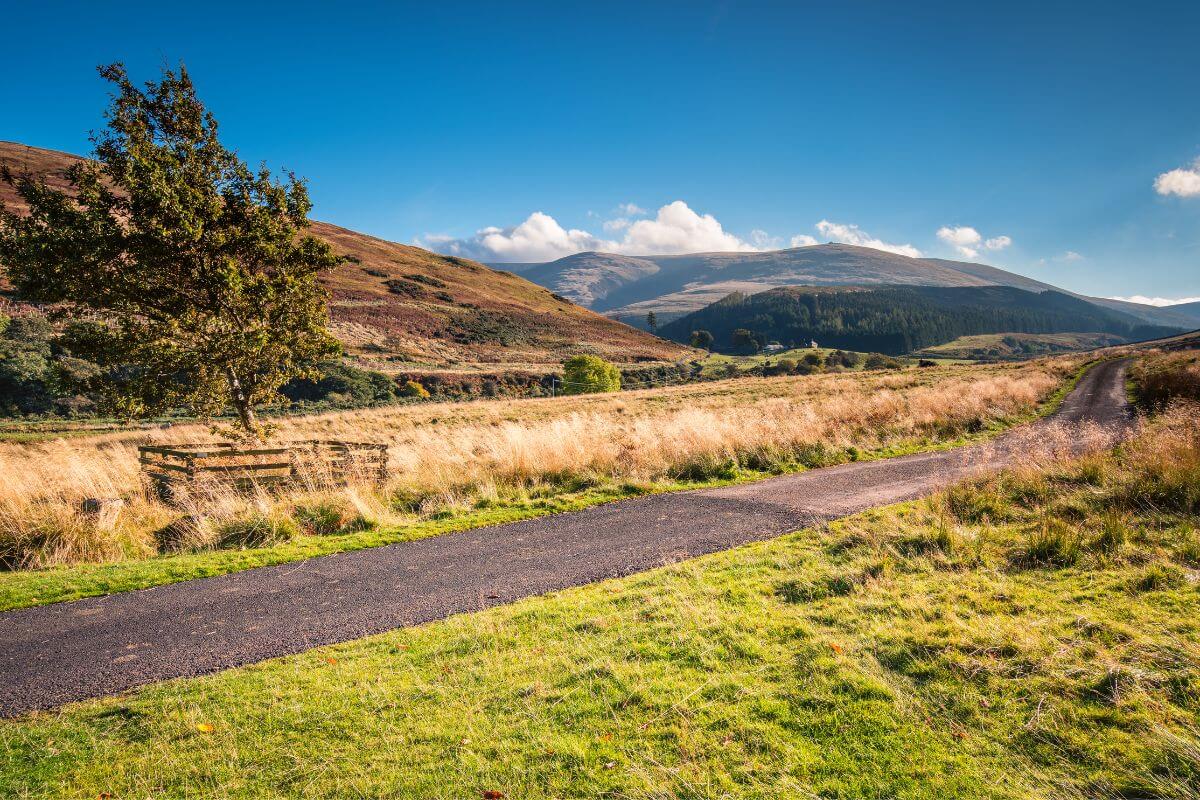
Located within the Northumberland National Park, this 2,674 feet (815 metres) jut is accessible through the Pennine Way. You’ll find that most hiking routes start from Harthope Burn. There’s a parking area at Langleeford if you’re road tripping the region.
As The Cheviot summit is a triangular plateau, the flatness obscures top-down views. On good days, you may spot Broad Law and Cross Fell, maybe even Scafell Pike. Remnants of a B-17 bomber aircraft can be found in peat bogs, while the landscape is rugged and wild. Expect foggy rolls down the mountainside which do little to cover Harthope Valley’s stunning autumnal bushes.
8. Hedgehope Hill
Hedgehope Hill is located around five kilometres from the Scottish border. Peaking at 2,343 feet (714 metres), Hedgehope Hill is one of the tallest mountains in the Cheviot Hills, offering excellent views from all angles. Summit views stretch down to Blyth by the coastline and Lindisfarne Castle.
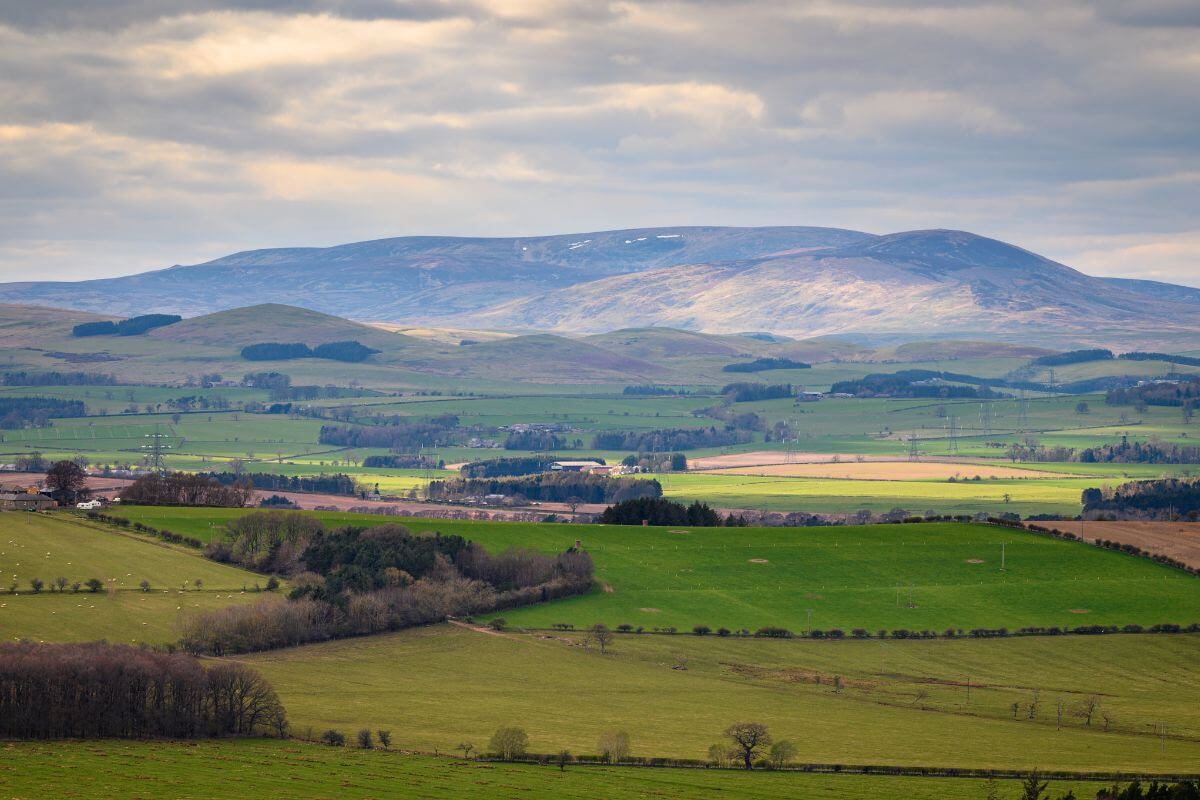
This English mountain is best climbed from Langleeford in the Harthope Valley, accessible by a minor road near Wooler. The popular town is a great base for hikers exploring the region. You can also approach from Linhope, but at a longer distance. Either way, it’s a steep climb up, especially towards Housey Crags and Long Crags.
Highest mountains in England within the Yorkshire Dales
If you want to find out why Yorkshire goes by the nickname of God’s Own Country, you need to take in views of the landscape from the peak of a mountain in the Yorkshire Dales.
9. Whernside
Situated within the Yorkshire Dales National Park, Whernside is the highest of the Yorkshire Three Peaks at 2,415 feet (736 metres). The most common way to get there is by taking the footpath alongside the Ribblehead Viaduct, which is an attraction in itself.
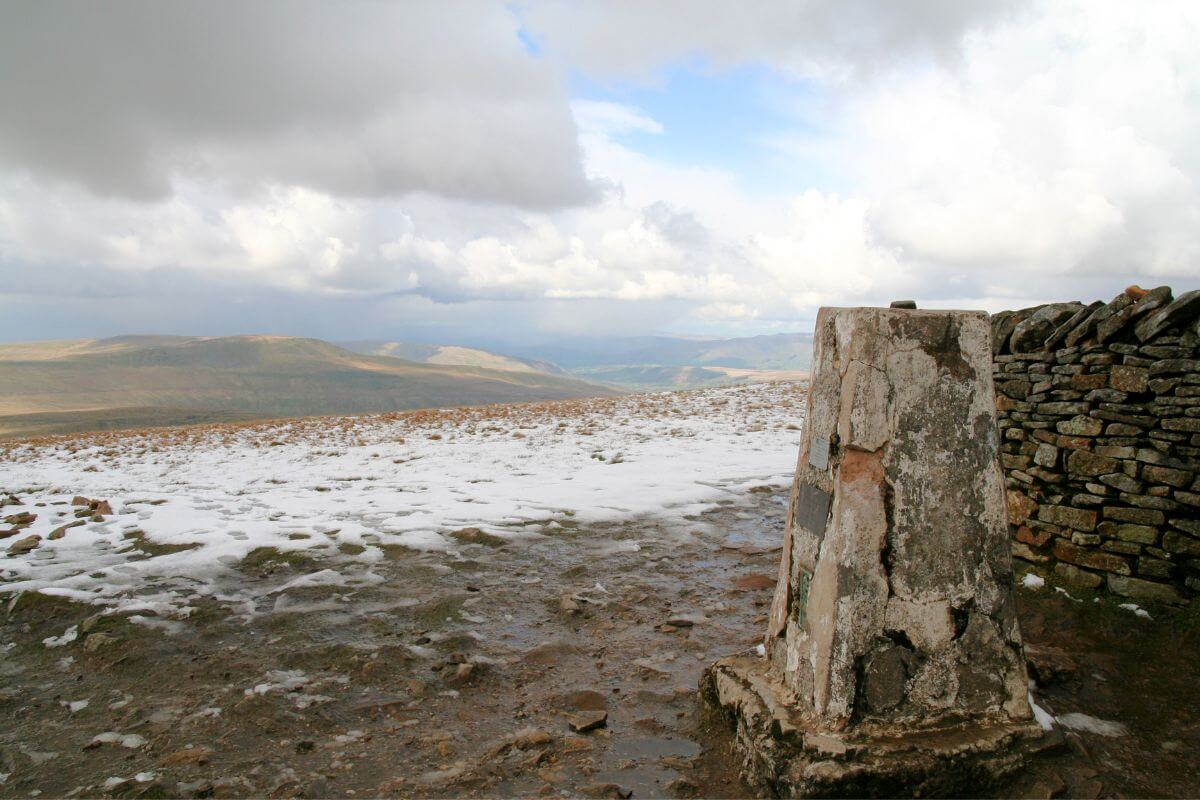
Farmsteads and rambling lanes make up much of the initial walk, which later leads you to Force Gill Waterfall and other natural sights. As you climb up to the summit which straddles the Cumbria county boundary, the views open up towards the Howgills, the Lake District and Morecambe Bay.
Hiking at Whernside is one of the best days out in North Yorkshire. If you fancy tagging a couple of nights onto your time here, we recommend paying a visit to Harrogate.
10. Ingleborough
Just 12 meters shorter than Whernside, Ingleborough is another famous Yorkshire Peak. But unlike other English mountains on this list, the 2,372 feet (723 metres) mountain hides an amazing secret: a complex series of cave systems.
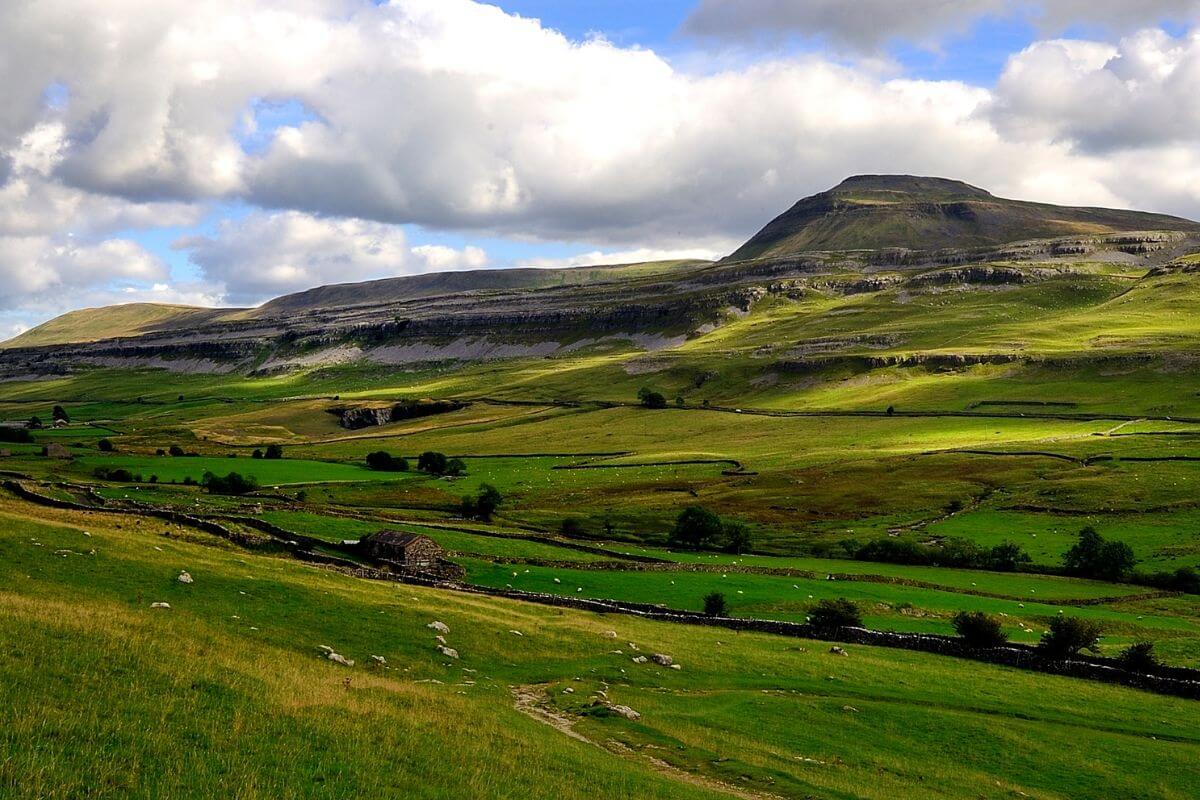
This ‘hollow mountain’ is known for two underground wonders in particular; the Ingleborough Cave and White Scar Cave. Other random attractions include sprawling cairns and cross shelters at the peak, not to mention the foundations of a ‘hospice tower’ and Iron Age hut ruins. Of course, views over Yorkshire Dales are guaranteed.
You can get there via a variety of routes. Old Hill Inn in Chapel-le-Dale is short but steep; Clapham route blows past Trow Gill and Gaping Gill but is a roundabout route.
After hiking to the peak of Ingleborough, you might want to embark on more walks across the Yorkshire Dales. After all, it’s one of England’s most beautiful National Parks. If you’d prefer to rest your legs after such a challenging climb, you can always take in the view of the Dales from the comfort of your own vehicle. It’s one of the great drives in England.
Highest mountains in the Peak District
If you want to discover some the tallest mountains in England that conceal caves as deep as 400 metres below the ground, you can’t go wrong by heading to the Peak District, one of England’s most stunning regions.
11. Kinder Scout
Kinder Scout is a moorland plateau and national nature reserve in the Dark Peak of the Derbyshire Peak District. It houses the highest point in the Peak District at an elevation of 2,087 feet (636 metres).
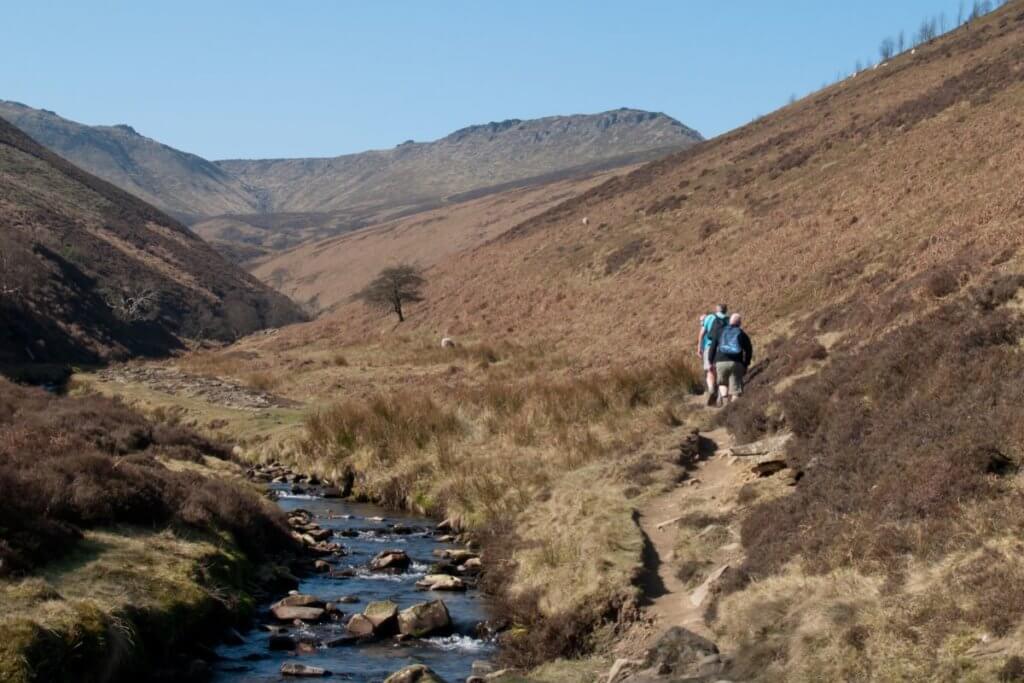
Accessible from the villages of Edale and Hayfield, it yields various hiking trails. Some paths take you over gentle streams and dark gritstone; others lead you through unique peats and towards the glorious Kinder Downfall waterfall. Picturesque Jacob’s Ladder trail crosses an old packhorse bridge while Serene Mermaid’s Pool and interesting rock formations like the Boxing Gloves are other local highlights.
Note that it’s not for the inexperienced – there are no way markers and signs. Expect to face unclear footpaths once you’re on the plateau.
12. Bleaklow Head
If you’re attempting to walk Bleaklow Head, know that it’s part of Bleaklow’s peat-covered, gritstone moorland. The walk itself is comfortable, gently ascending and partially paved. The occasional boggy ground, though, calls for proper hiking boots.
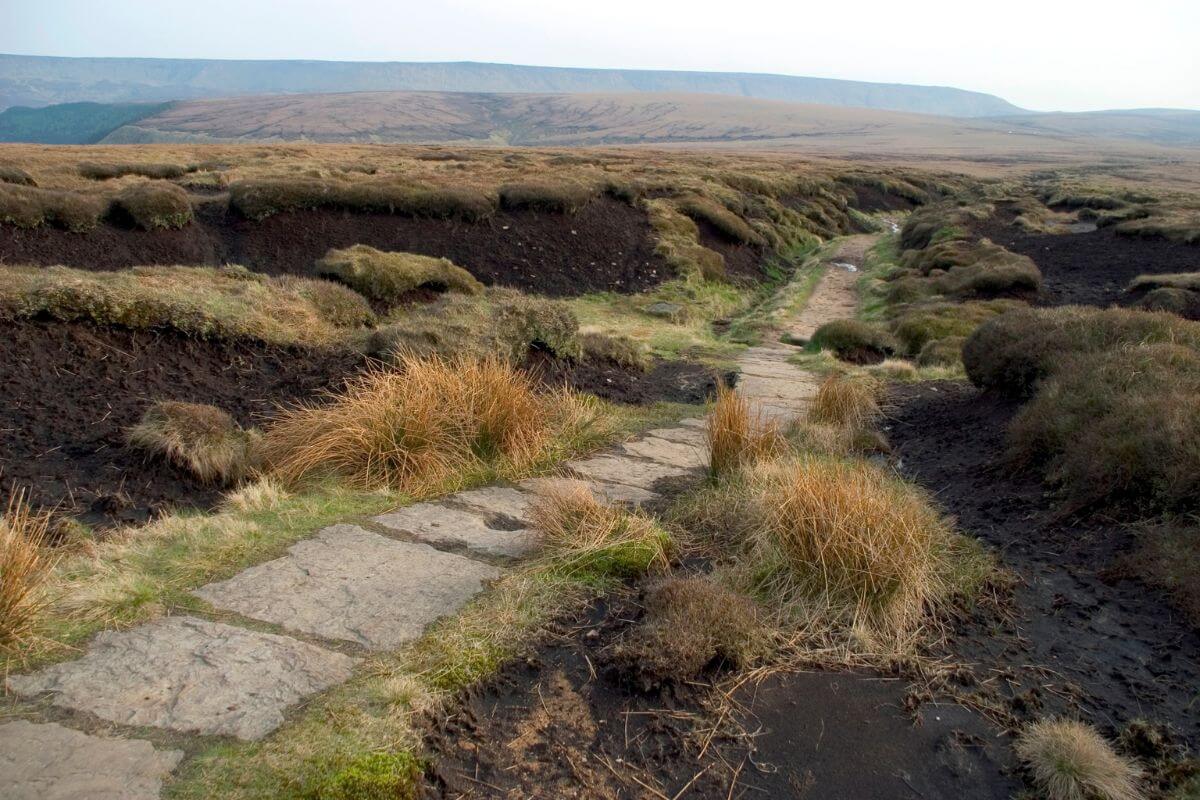
The summit, at 20,77 feet (633 metres), is marked by a huge cairn of stones with a wooden pole stuck in it. Enjoy wonderful views across Greater Manchester, Lancashire, Cheshire and the Hope Valley. It’s also home to the wreckage of a historic military aircraft and a memorial.
Its position near the town of Glossop makes it a popular walkway. The challenging trail is accessible from the Longdendale Trailhead at Torside Reservoir, which cuts into the Pennine Way and past Skyes Moor.
After exploring the Peak District, you might want to find out what else there is to do on days out in Derbyshire. Some of our favourite attractions include Matlock Bath, Poole’s Cavern and Renishaw Hall, which is one of England’s amazing stately homes.
Highest mountains in England
If you’re looking for a fun day trip with a bit of action, why not explore some of the highest mountains in England?
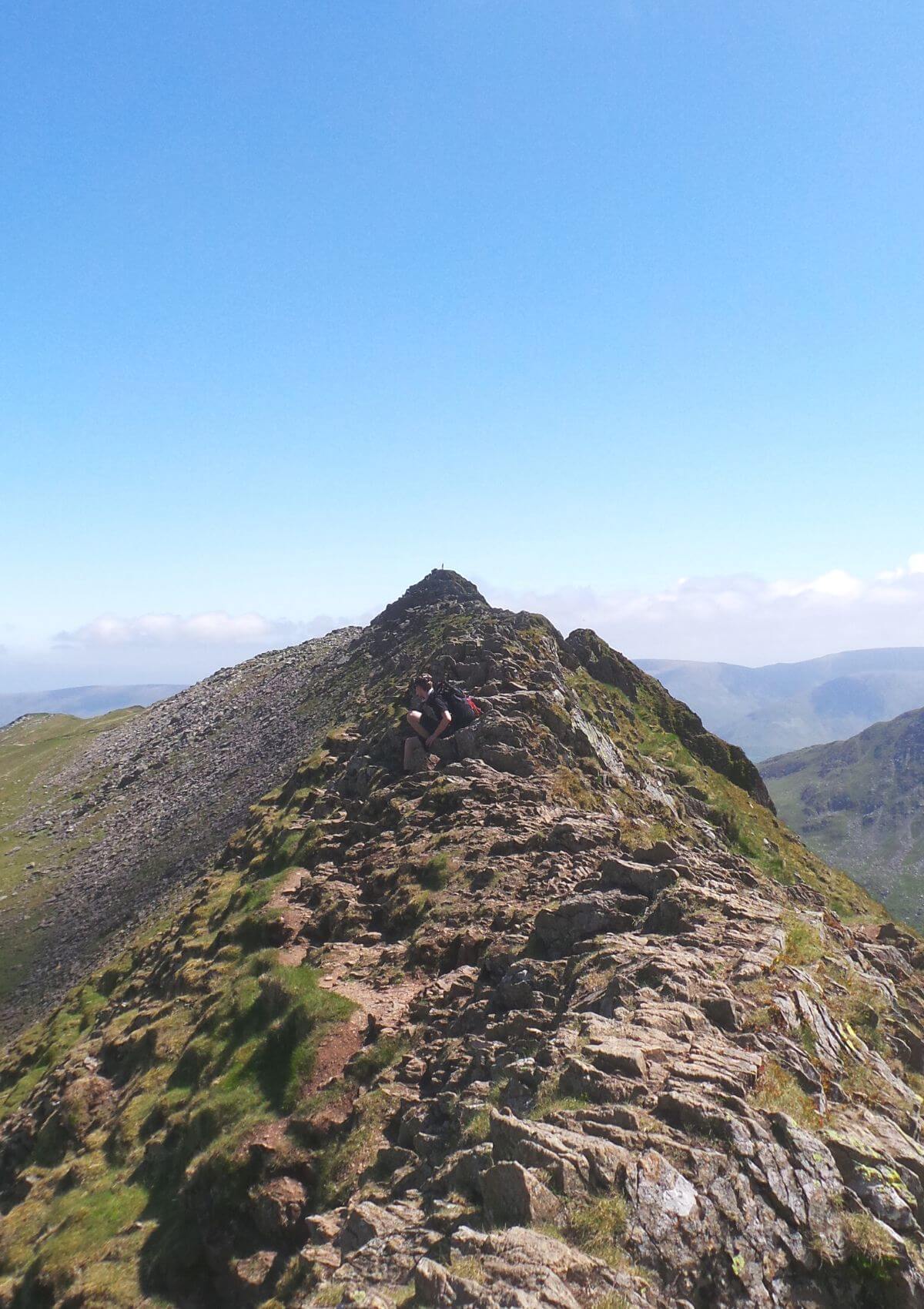
The Lake District holds an incredible number of England’s highest mountains, but more of these natural attractions are spread across the North Pennines and the Peak District.
You don’t even have to climb Scafell Pike, England’s tallest mountain, to experience the dynamic terrain. From cairns to waterfalls, aircraft wreckage and boggy moorlands, the landscapes across these mountains are extremely diverse. England is a paradise for hikers, both experienced and not. Check out England’s National Trails for more.
And if you want to know about mountains just beyond England’s borders, check out the highest mountain in the UK!
FAQ about the highest mountains in England
Have a few queries about England’s tallest peaks? Here are the answers to some of our most frequently asked questions.
Where are the highest mountains in England?
Scafell Pike is the highest mountain in England, in the Lake District.
What is the highest mountain in the UK?
The highest mountain in the UK is the iconic Ben Nevis, which stands at an impressive 1,345m tall.
Quick list of highest mountains in England to visit
- Helvellyn
- Skiddaw
- Scafell Pike
- Scafell
- Cross Fell
- Great Dun Fell
- The Cheviot
- Hedgehope Hill
- Whernside
- Ingleborough
- Kinder Scout
- Bleaklow Head
- Where to See the Best Christmas Lights in London (2025) - 15 October 2025
- 9 Best Pumpkin Patches in England for 2025: Where to Go Pumpkin Picking This Autumn - 14 October 2025
- 7 Christmas Markets in London You Should Definitely Visit - 7 October 2025

